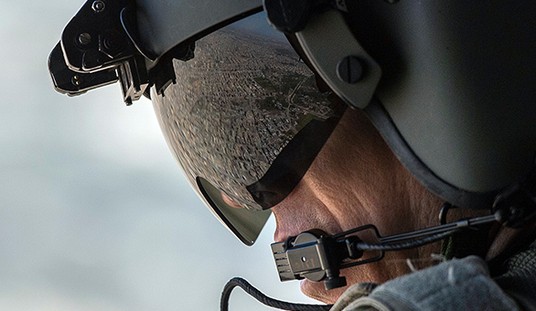The River Where America Arrived
It was July 15, 1918. In the heat of a brutal French summer, German artillery opened up on Allied lines at the Marne River. A barrage unlike all others, it was Berlin’s final gamble to break the Western Front. What they didn’t count on was that a new player had arrived, and he wasn’t bluffing.
America wasn’t just sending weapons anymore. We were sending boys who would soon become men by force of fire, and in doing so, the United States proved, once and for all, that it was no longer a mere spectator on the global stage.
Modern Parallels: From the Marne to Ukraine
When Germany launched its last offensive at the Marne, they were gambling on exhaustion. They believed the Allies were too fatigued, too fractured, and too under‑resourced to withstand one final blow. But then American boots hit the dirt. More than 250,000 Americans stood in defiance—not just a token few—by the time the counterattack surged forward.
Today, in Ukraine, we see echoes of that gamble again. A significant power pushes forward under the illusion that the West has grown soft and wouldn't respond, thinking that American strength is nothing but a bluff.
Although late to the game, the world learned in 1918 that the United States alone had the strength to alter the course of the war. Lessons learned echo in chambers deep inside the Kremlin, Beijing, and Tehran. The entire world knew then that when America commits, we don't simply turn the tide; we bring a tsunami.
This isn't arrogance talking. It's the memory shared by each nation that watched the Marne become the moment the war turned.
The Grit of American Industry: Mobilization Without Hesitation
Americans were underestimated before even firing a shot. European leaders believed that a republic founded by farmers and shopkeepers was unable to manufacture the tools of war quickly enough to make a difference. They were convinced that timelines and logistics would be barriers that couldn't be breached.
Boy, were they wrong.
Midway through 1918, the United States transformed itself from a standing army of less than 130,000 to a wartime machine capable of shipping hundreds of thousands across the ocean and, most importantly, resupplying them every week.
Everything, from munitions to uniforms, trucks, and artillery, was manufactured with fantastic efficiency.
This wasn't just hyperbole; it was real production. The American Expeditionary Forces were fed, armed, and clothed by an industrial base without precedent in history.
Modern wars require advanced technology, including AI integration, waves of drones, and cyber dominance. The Marne reminds us of what made nations fear our industry. America didn't need perfect conditions to succeed; it builds, adapts, and overwhelms.
It's hard to imagine that same Marne-era mindset driving today's society, where engineers, welders, coders, and designers are just as vital to our liberty as those who wear the uniform.
Where Blood Met Soil: Belleau Wood and Château‑Thierry
It's one thing to read about America's efforts in WWI, but nothing compares to listening to the veterans who were there, telling their stories.
At Château‑Thierry, U.S. troops held bridges while forcing back the Germans using bayonets. The U.S. 3rd Division earned the moniker "Rock of the Marne" for a specific reason. Even when they were outgunned, they refused to retreat.
U.S. Marines didn't stop the German offensive at Belleau Wood. They smashed it. The men fighting weren't just veterans; they were Kansas farm boys and Pittsburgh steelworkers. Many of our boys were working through their first combat just days after arriving. They fought through poison gas, machine gun nests, and terrains from Hell.
There was one legendary man who yelled something that grew larger than he did. Gunny Sergeant Dan Daly rallied his men when he yelled, “Come on, you sons of bitches, do you want to live forever?”
What those men fought for wasn't an empire; they fought for the men alongside them, and because liberty isn't something inherited, it's something that is defended.
From Isolation to Respect
It’s true that after World War I, the United States recoiled. We rejected the League of Nations. We withdrew into the comfort of distance. But the world didn’t forget what happened at the Marne.
They didn’t forget the speed of our arrival, the depth of our sacrifice, the rhythm of our industry—and they didn’t forget that the war ended in November, not years later, because America finally showed up and meant it.
We may have pulled back from international entanglements in the 1920s and ’30s, but global powers never again ignored the capabilities of the American people.
The Marne didn’t make us an empire; it made us respected.
Final Thoughts: Why We Share the Marne
Some anniversaries fill the calendar, some drift by, and others ought to be shouted from rooftops. July 15 deserves the latter.
We don’t just remember it because Americans fought. We remember it because they proved we belonged.
During an age where America's influence is questioned, especially from within, we must remember the blood that carved our seat at the table. That seat wasn't bought or inherited. It was earned at Château‑Thierry, Belleau Wood, and the banks of the Marne.
At some point, they'll learn for good that the American spirit is still alive, and it's not just something read about in our history.
Until then, let them question our wherewithal.
And then let them fear our answer.
When They Ignore the Story, We Write It.
Mainstream outlets are allergic to the truth. At PJ Media, we say what they won’t. Join PJ Media VIP program and get access to investigative pieces they pretend don’t exist. Take 60% off with FIGHT and read what they’re scared to print.










Join the conversation as a VIP Member